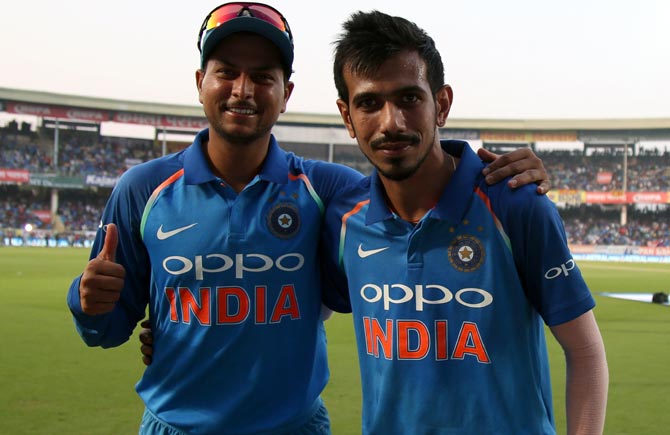At a time when most teams are struggling to include one, Team India is blessed with a pair of wrist spinners in the playing XI which enhances the side’s balance, feels former South African chinaman bowler Paul Adams. The pair of Yuzvendra Chahal and Kuldeep Yadav has scalped 33 wickets in six ODIs as India registered a historic maiden bilateral 5-1 series win in the rainbow nation.

With most of the teams preferring wristspinners in the limited overs formats, Adams believes India is in an advantageous position if they can keep playing the duo regularly. He said, “If you look at the way cricket has gone in recent times, it has become more in favor of batsmen. So it is great for India that they are able to include both in the same playing XI. Yes, they are wrist spinners but they are different. They can take the ball away from batsmen. With different angles and different deliveries, they are very potent.”
Also read: Sunil Gavaskar Has Complete Confidence In Chahal and KuldeepAs quoted in PTI, Adams said, “India are eager to use both together and their team balance even allows for it. Not a lot of teams can do that i.e., include two spinners in the same ODI eleven, let alone two wrist spinners. South Africa usually don’t use two spinners in ODIs or T20Is. At Johannesburg ODI, they didn’t have a single spinner on a good batting surface. Yet, India were able to play both. It is definitely a unique position to be in.”
Chahal and Kuldeep came into the limelight in August when India made a decisive shift to leg spin, keeping the 2019 ODI World Cup in mind. What started as an exploratory move to enhance spin options have now gained durability as R Ashwin and Ravindra Jadeja continue to be excluded from India’s limited-overs plans.
Also read: Tendulkar feels Indian wristies will help India to perform better overseasPaul believed that the wrist-spin duo has an advantage over Ashwin and Jadeja as he dissected the wrist spin duo’s bowling. He said, “Their success is down to slow pace. Yes, they haven’t played in South Africa before but they saw the pitches here and knew that they had to bowl at a slower pace. They were put under pressure in only one match but it was down to conditions. But leave that game aside, they have been nearly unplayable.”
He further elaborated, “Chahal has a lot of consistency. He gives a lot of rotation to the ball, which is good. Yadav’s googly is very bothersome for the batsmen and not easy to read. The other thing that has worked from them is that they can take the ball away from batsmen. Irrespective of who bowls it, pacers or spinners, the ball going away has always been a wicket-taker in cricket. Someone like Ashwin has a lot of variations and I hear he is even developing some traits of leg spin. But these wrist spinners can move the ball naturally in both directions and that is more potent.”

The South Africa tour has proven to be immensely helpful to the two spinners, felt Adams. He said, “IPL does provide different challenges and settings. Chahal and Yadav are used to bowling in difficult situations and so learn to develop their skills like how to beat batsmen in flight, or trajectory, or change of pace. To a degree the IPL is helpful for batsmen as well but on those pitches you cannot learn how to play spin. You can only hit it.”
On the Proteas’ struggle against the spin duo, Paul said, “Not playing spin is not the problem. Staying at the wicket is the problem. When they didn’t have to stay at the wicket, they could attack spin. In other matches, they were not able to do that because they needed to build the innings over 50 overs.”
Also read: Kepler Wessels heaped praises for Kuldeep and ChahalHe further added, “But I don’t think there is a huge worry at the moment about this. Players don’t arrive at the international level as finished products. The best players learn on the job. A-tours to the subcontinent or even other conditions are beneficial.”
Paul concluded by giving some advice to the youngsters, he said, “Young batsmen need to soak that experience in and work with that knowledge. After that, junior-level coaches will have a great responsibility in preparing the next generation of batsmen.”
